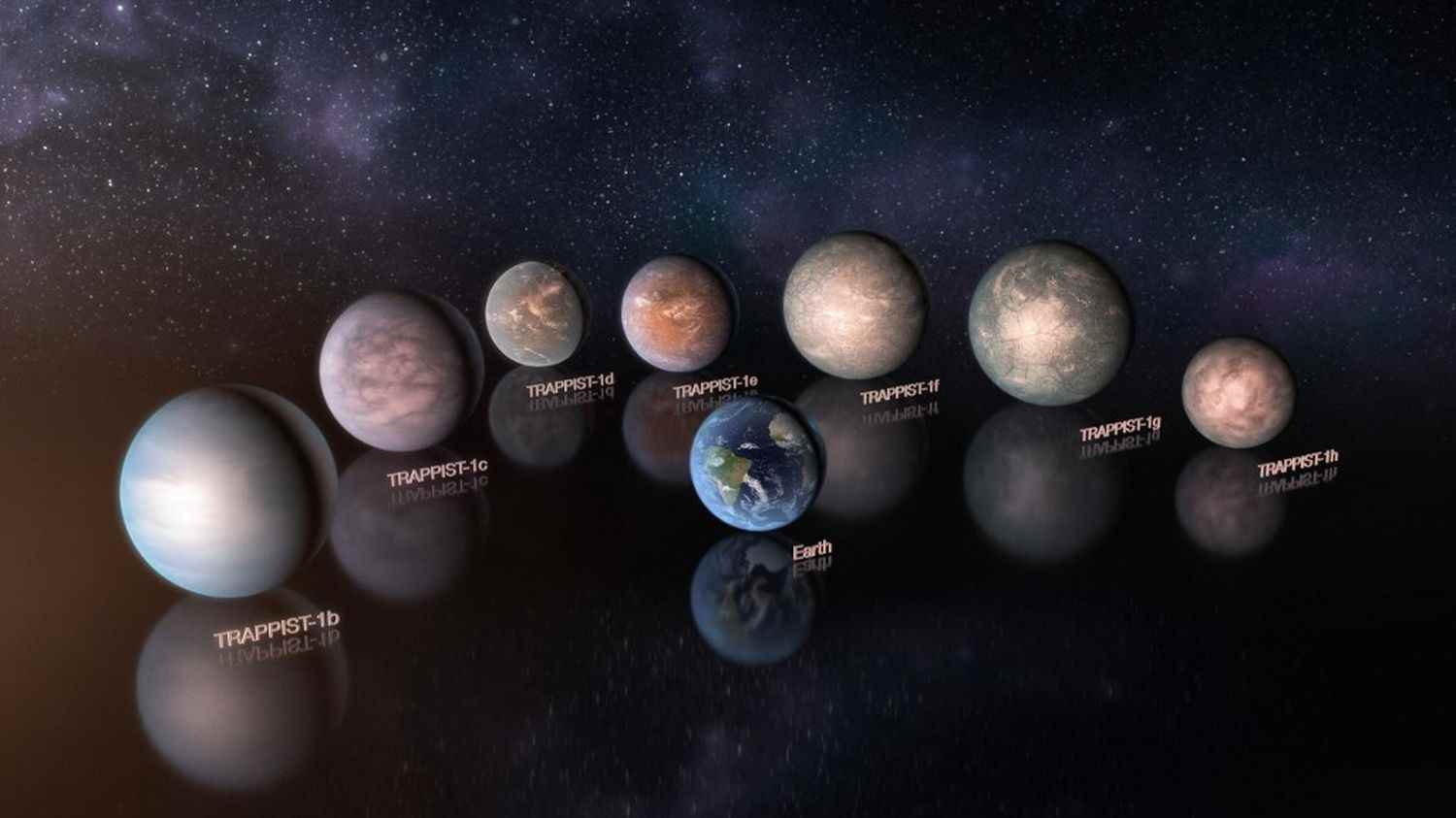The excitement is maximum within the scientific community. The James Webb Telescope began observing the system of seven exoplanets discovered in 2017. This set of planets, similar to Earth and located around a star, could well meet the prerequisites for the possible presence of life forms. Franceinfo explains why, with Trappist-1, researchers have their heads in the stars more than ever.
1What is Trappist-1?
In 2017, aan international team led by Belgian researchers from the University of Liège discovers the existence of seven exoplanets, all of a size close to that of the Earth. They orbit around Trappist-1, a dwarf star located 39 light-years from our solar system. Why “Trappist”? In homage to the telescope of the same name located in Chile which made this observation… and also in a nod to a Belgian beer.
“Trappist-1 is a red dwarf, when our Sun is a yellow dwarf”, explains to franceinfo Philippe Delorme, researcher at the Institute of Planetology and Astrophysics of Grenoble (IPAG). It is ten times less massive than our star. red dwarfs “are the smallest and faintest stars; about 80% of stars are red dwarfs, but none are visible to the naked eye from the Earth”details Futura Sciences.
2What are the specificities of these planets?
The seven planets (baptized b, c, d, e, f, g and h) are rocky and not gaseous, like Jupiter or Saturn. These seven planets are very close to their star. “If we had to compare with our solar system, it is as if they were located in the orbit of Mercury”, illustrates at franceinfo Marc Ollivier, astronomer and director of the Institute of Space Astrophysics of Orsay (Essonne). This means that they revolve around Trappist-1 in a very short time, between a day and a half, for the nearest, and 19 days, for the farthest, reports The Parisian.
Another characteristic: this system is located less than forty light-years from Earth. Knowing that a light year is equivalent to about 9,500 billion km, Trappist-1 is therefore nearly 370,000 billion km away from us.
“It’s the very close suburb of Earth, when we know that our galaxy, the Milky Way, measures 100,000 light years.”
Marc Ollivier, astronomer and director of the Institute for Space Astrophysicsat franceinfo
Finally, these planets are aligned, that is to say that they lower the luminosity of the star when they make their revolution, “which makes them easier to study”adds Philippe Delorme.
3Why does this system excite the scientific community?
Several thousand exoplanetary systems have already been detected in space since the first in 1995, but this one provokes particular enthusiasm. “There is a conjunction between the presence of planets in the habitable zone of a star and the observation capacity of James Webb”emphasizes Philippe Delorme. “It is the closest system physically to Earth, with planets that look like it and are aligned”he adds.
Three of the planets, the e, the f and the g, precise The Parisianare therefore located in the “habitable area” of Trappist-1, that is to say neither too close nor too far from it, offering adequate temperatures for liquid water to exist on their surface.
“It doesn’t mean there is life, but it does mean it’s not silly to think so.”
Philippe Delorme, researcher at the Institute of Planetology and Astrophysics of Grenobleat franceinfo
The system “Trappist-1 is uniqueconfirms to AFP Olivia Lim, doctoral student at the University of Montreal. All, or almost all, of the conditions there are favorable for the search for life outside our solar system.”
However, if there is life, it could be very different from what we know on Earth, because the rotation of the planets on themselves and their revolution around Trappist-1 could be synchronous. “As for our Moon, for which we always see the same face, the star would only see one face of the planets, explains Marc Ollivier, it would then be eternal day for this side and eternal night for the other.”
4Why is James Webb changing the game?
The Trappist telescope in Chile, if it was able to find them, could not go much further. James Webb can. “VS’is really the perfect tool to study the planetary system Trappist-1, a star that emits mainly in the infrared, James Webb being an infrared space telescope”asserts to Parisian Michael Gillon, astronomer at the University of Liège. Thanks to his more sophisticated instruments, he will be able to determine whether these planets have an atmosphere and, if it does, its composition.
How ? By observing the planets as they transit around the star, that is to say as they pass in front of it, from our point of view. With each passage of a planet in front of Trappist-1, James Webb will be able to observe the drop in luminosity of the star, but also to break down its light, by spectroscopy, just as a rainbow breaks up sunlight into several colors. .
By multiplying the observations, James Webb will therefore be able to identify the possible presence “of traces of biomarkers, glide Philippe Delormeor the presence of a gas or a combination of gases that we would detect in an atmosphere, that we cannot explain by anything other than the presence of a form of life”. “The presence of methane and oxygen, like on Earth, would be really exciting”concludes the scientist.
